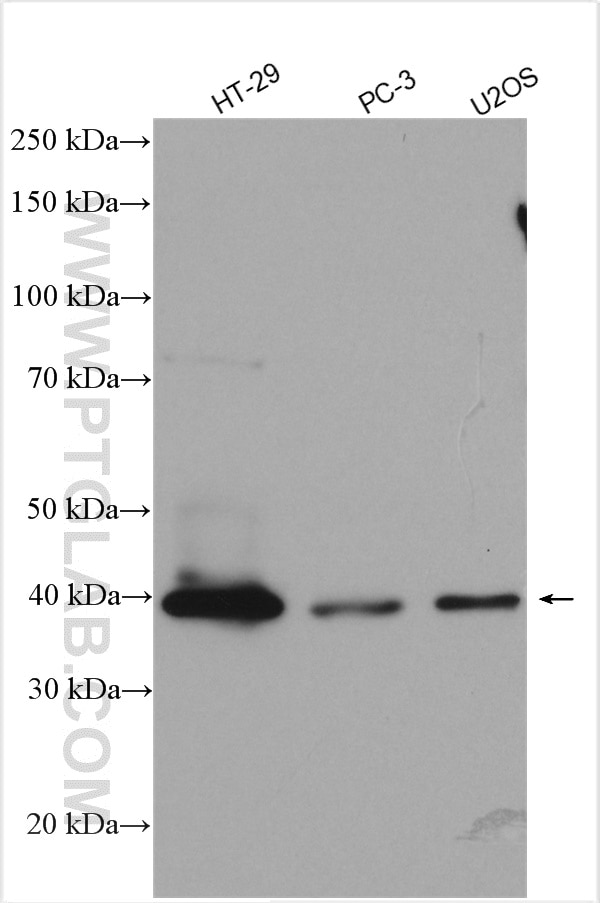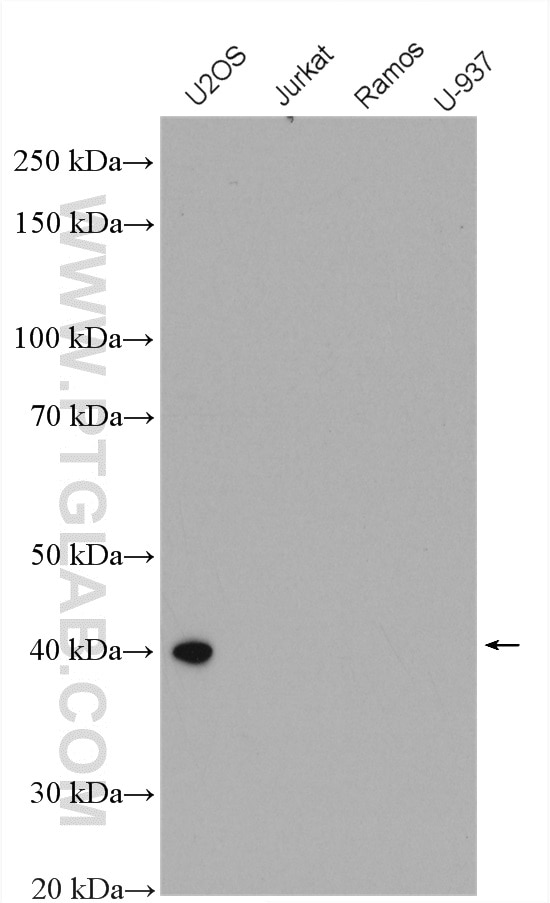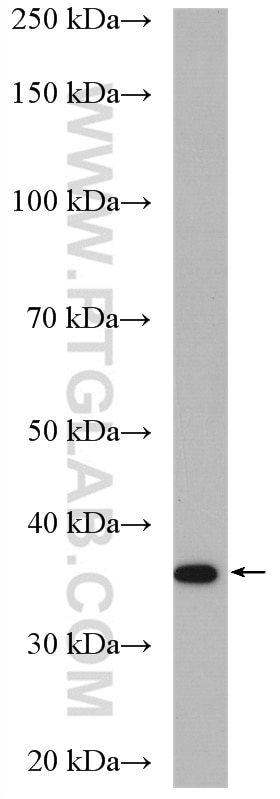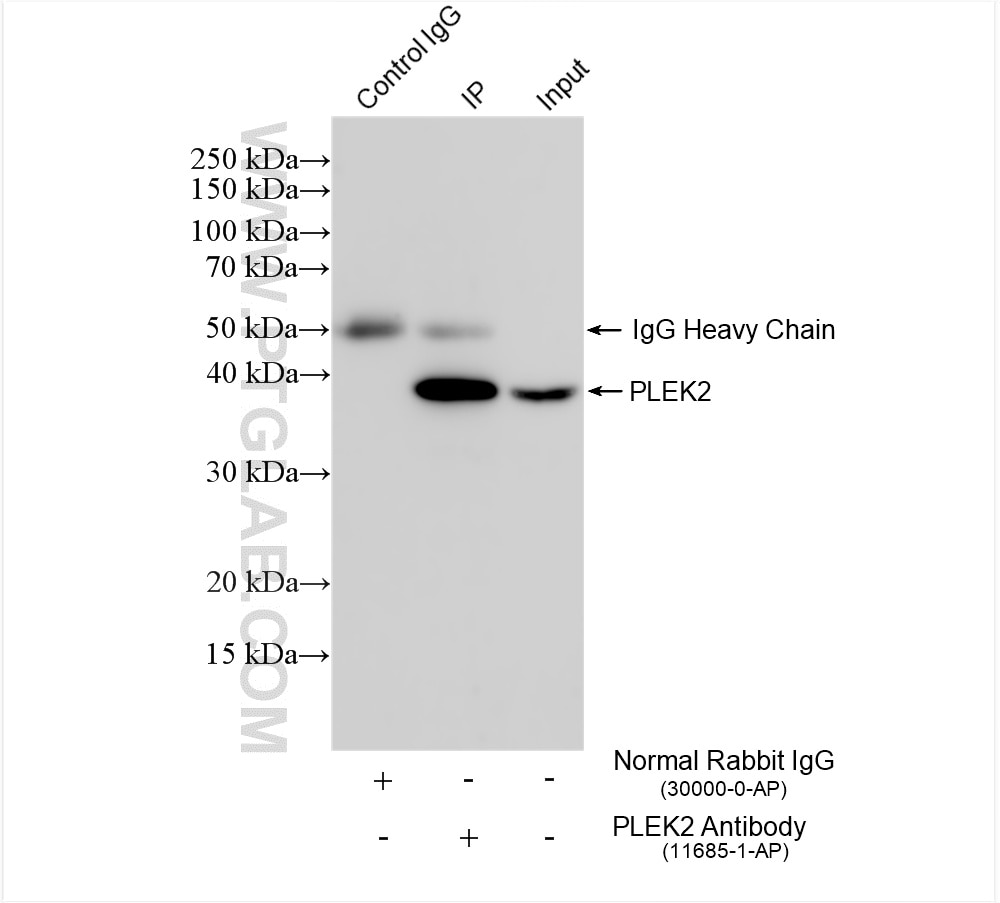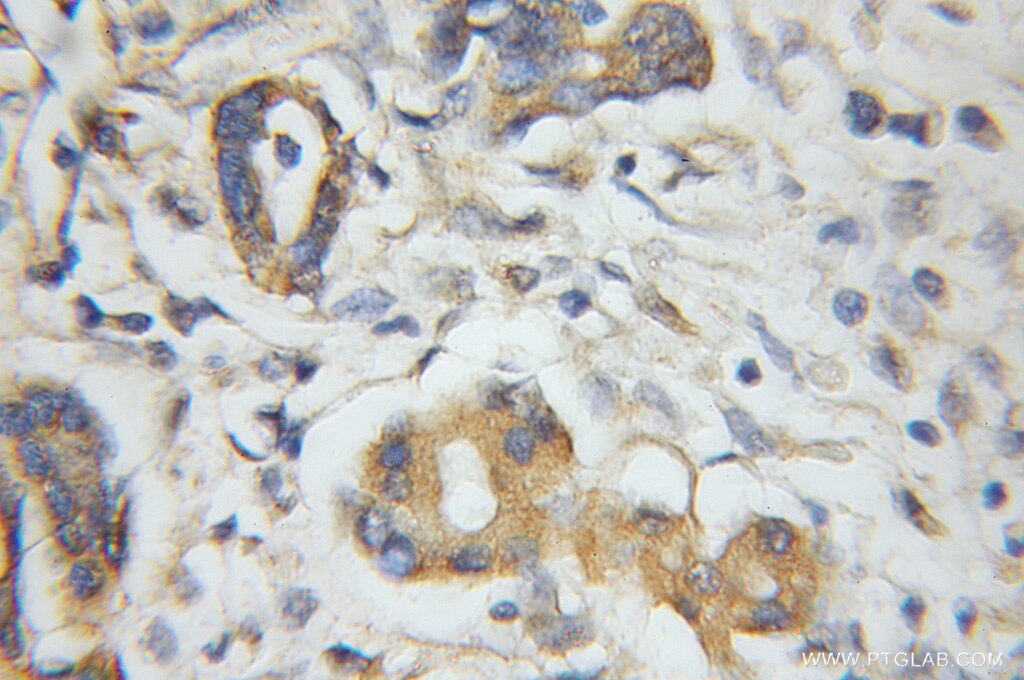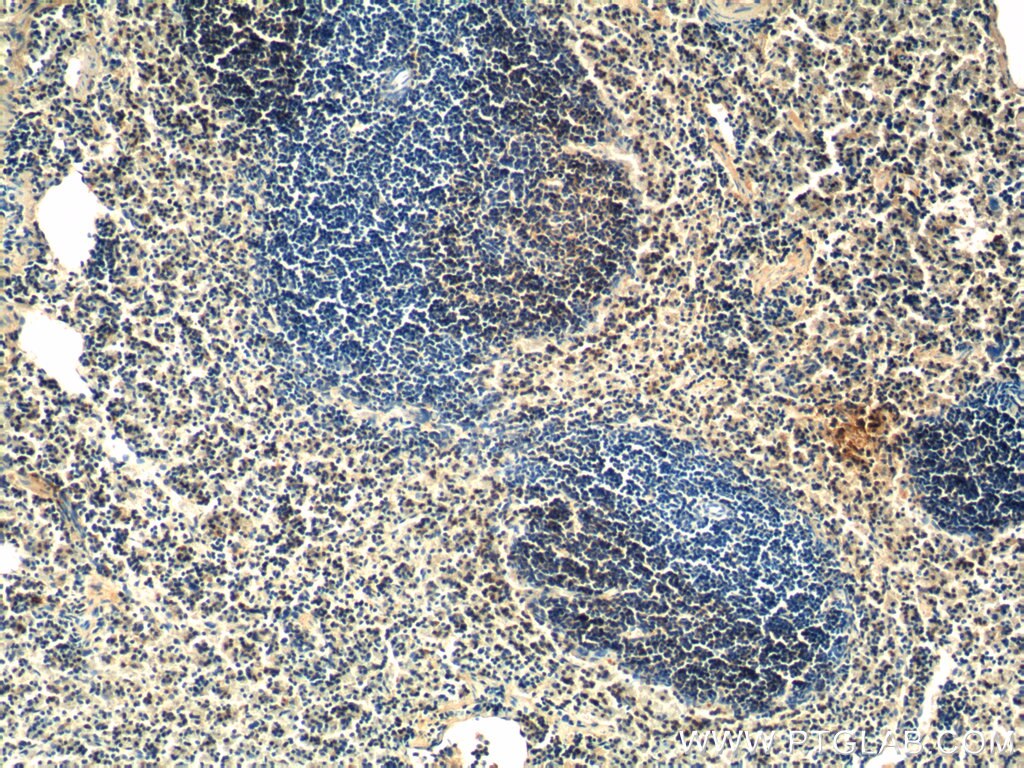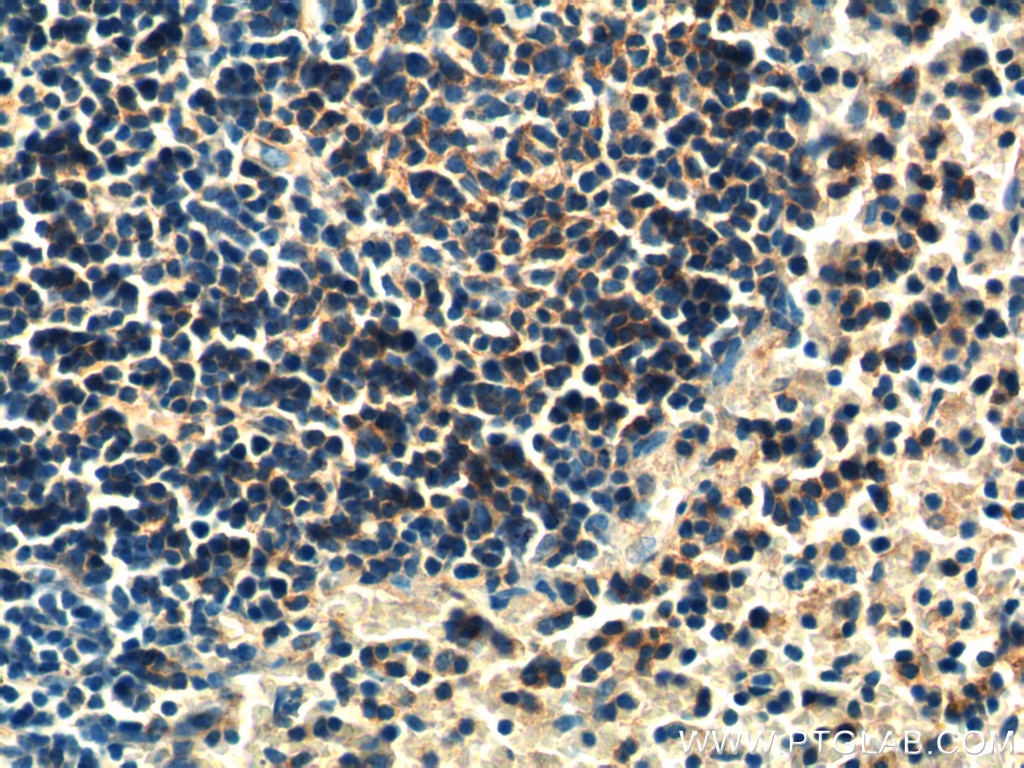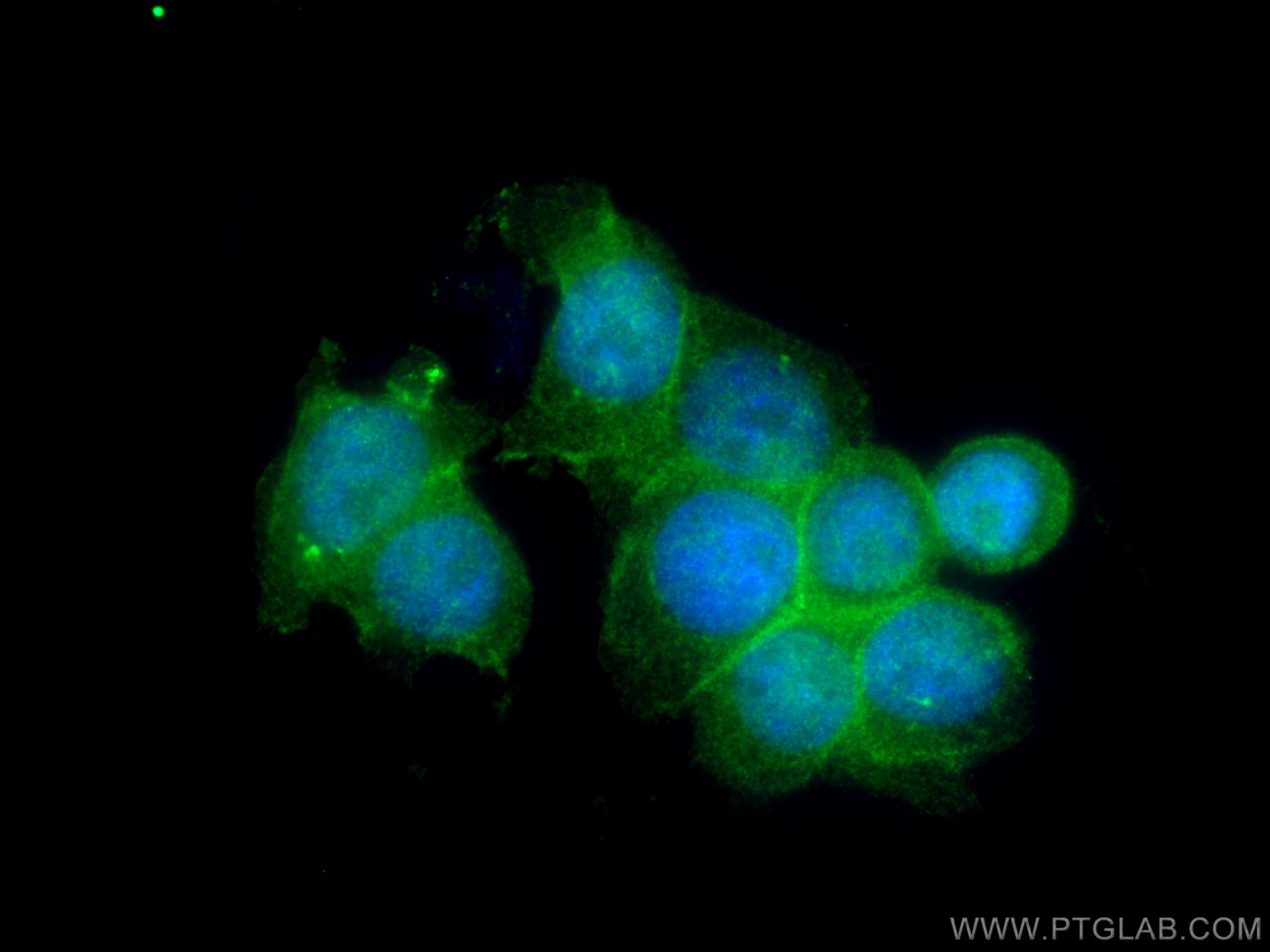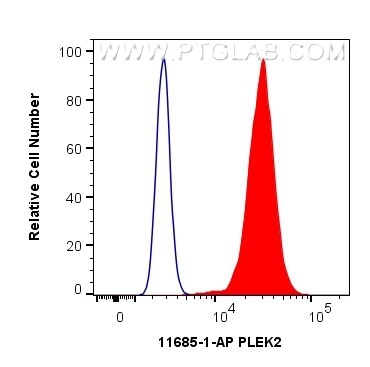- Phare
- Validé par KD/KO
Anticorps Polyclonal de lapin anti-PLEK2
PLEK2 Polyclonal Antibody for WB, IHC, IF/ICC, FC (Intra), IP, ELISA
Hôte / Isotype
Lapin / IgG
Réactivité testée
Humain, rat, souris
Applications
WB, IHC, IF/ICC, FC (Intra), IP, CoIP, ELISA
Conjugaison
Non conjugué
N° de cat : 11685-1-AP
Synonymes
Galerie de données de validation
Applications testées
| Résultats positifs en WB | cellules HT-29, cellules Caco-2, cellules PC-3, cellules U2OS |
| Résultats positifs en IP | cellules HT-29, |
| Résultats positifs en IHC | tissu de cancer du pancréas humain, tissu splénique de souris il est suggéré de démasquer l'antigène avec un tampon de TE buffer pH 9.0; (*) À défaut, 'le démasquage de l'antigène peut être 'effectué avec un tampon citrate pH 6,0. |
| Résultats positifs en IF/ICC | cellules HT-29, |
| Résultats positifs en FC (Intra) | cellules HT-29, |
Dilution recommandée
| Application | Dilution |
|---|---|
| Western Blot (WB) | WB : 1:500-1:2000 |
| Immunoprécipitation (IP) | IP : 0.5-4.0 ug for 1.0-3.0 mg of total protein lysate |
| Immunohistochimie (IHC) | IHC : 1:20-1:200 |
| Immunofluorescence (IF)/ICC | IF/ICC : 1:50-1:500 |
| Flow Cytometry (FC) (INTRA) | FC (INTRA) : 0.40 ug per 10^6 cells in a 100 µl suspension |
| It is recommended that this reagent should be titrated in each testing system to obtain optimal results. | |
| Sample-dependent, check data in validation data gallery | |
Applications publiées
| KD/KO | See 11 publications below |
| WB | See 17 publications below |
| IHC | See 9 publications below |
| IF | See 3 publications below |
| IP | See 1 publications below |
| CoIP | See 2 publications below |
Informations sur le produit
11685-1-AP cible PLEK2 dans les applications de WB, IHC, IF/ICC, FC (Intra), IP, CoIP, ELISA et montre une réactivité avec des échantillons Humain, rat, souris
| Réactivité | Humain, rat, souris |
| Réactivité citée | Humain, souris |
| Hôte / Isotype | Lapin / IgG |
| Clonalité | Polyclonal |
| Type | Anticorps |
| Immunogène | PLEK2 Protéine recombinante Ag2297 |
| Nom complet | pleckstrin 2 |
| Masse moléculaire calculée | 353 aa, 40 kDa |
| Poids moléculaire observé | 38-40 kDa |
| Numéro d’acquisition GenBank | BC001226 |
| Symbole du gène | PLEK2 |
| Identification du gène (NCBI) | 26499 |
| Conjugaison | Non conjugué |
| Forme | Liquide |
| Méthode de purification | Purification par affinité contre l'antigène |
| Tampon de stockage | PBS with 0.02% sodium azide and 50% glycerol |
| Conditions de stockage | Stocker à -20°C. Stable pendant un an après l'expédition. L'aliquotage n'est pas nécessaire pour le stockage à -20oC Les 20ul contiennent 0,1% de BSA. |
Informations générales
PLEK2 belongs to the Pleckstrin homology domain family and is a 40-kDa protein containing the prototypic PH domains at its amino and carboxyl termini(PMID: 10419454). PLEK2 associates with membrane-bound phosphatidylinositols generated by phosphatidylinositol 3-kinase. PLEK2 interacts with the actin cytoskeleton to induce cell spreading.
Protocole
| Product Specific Protocols | |
|---|---|
| WB protocol for PLEK2 antibody 11685-1-AP | Download protocol |
| IHC protocol for PLEK2 antibody 11685-1-AP | Download protocol |
| IF protocol for PLEK2 antibody 11685-1-AP | Download protocol |
| IP protocol for PLEK2 antibody 11685-1-AP | Download protocol |
| Standard Protocols | |
|---|---|
| Click here to view our Standard Protocols |
Publications
| Species | Application | Title |
|---|---|---|
J Clin Invest Loss of pleckstrin-2 reverts lethality and vascular occlusions in JAK2V617F-positive myeloproliferative neoplasms.
| ||
Cancer Lett Pleckstrin-2 promotes tumour immune escape from NK cells by activating the MT1-MMP-MICA signalling axis in gastric cancer
| ||
Am J Pathol Pleckstrin-2 Mediates the Activation of AKT in Prostate Cancer and Is Repressed by Androgen Receptor | ||
Haematologica Targeted shRNA screening identified critical roles of pleckstrin-2 in erythropoiesis.
| ||
Int J Cancer PLEK2 mediates metastasis and vascular invasion via the ubiquitin-dependent degradation of SHIP2 in non-small cell lung cancer. | ||
Mol Carcinog PLEK2 mediates metastasis and invasion via α5-nAChR activation in nicotine-induced lung adenocarcinoma
|
